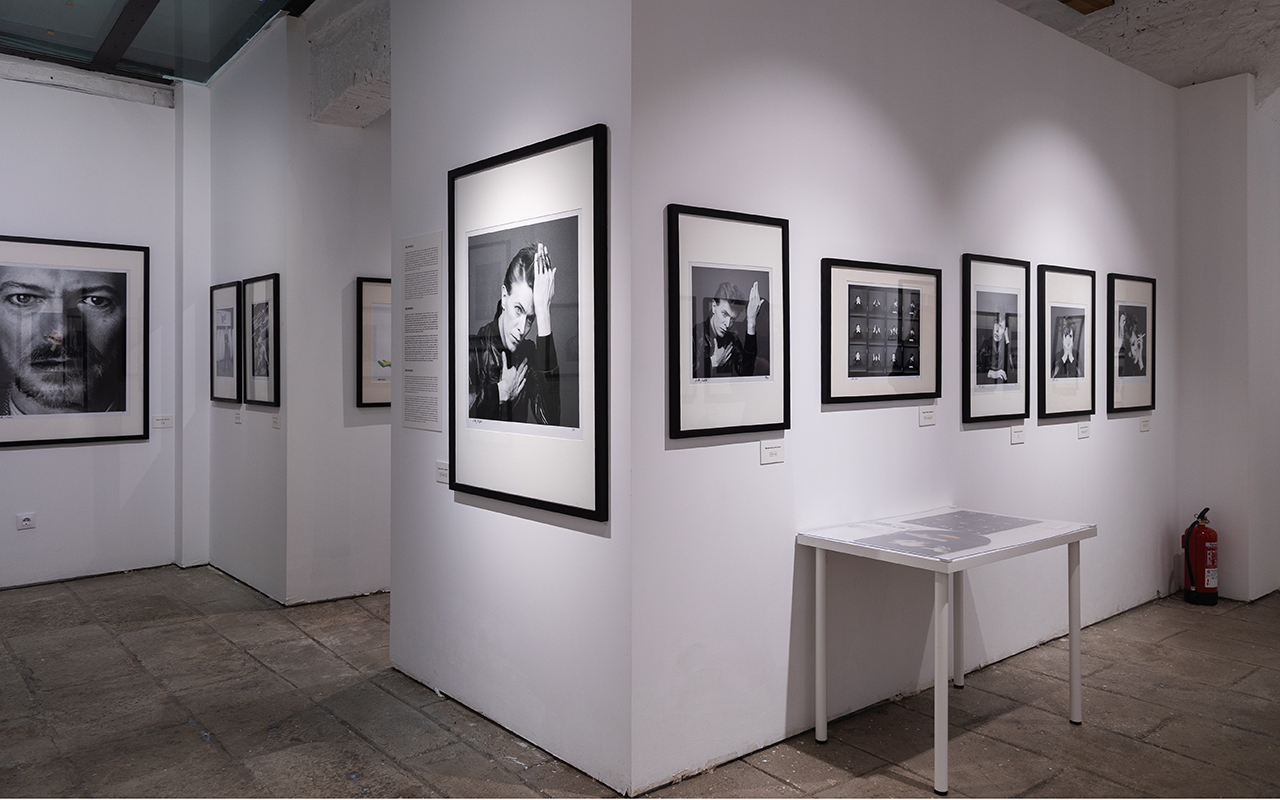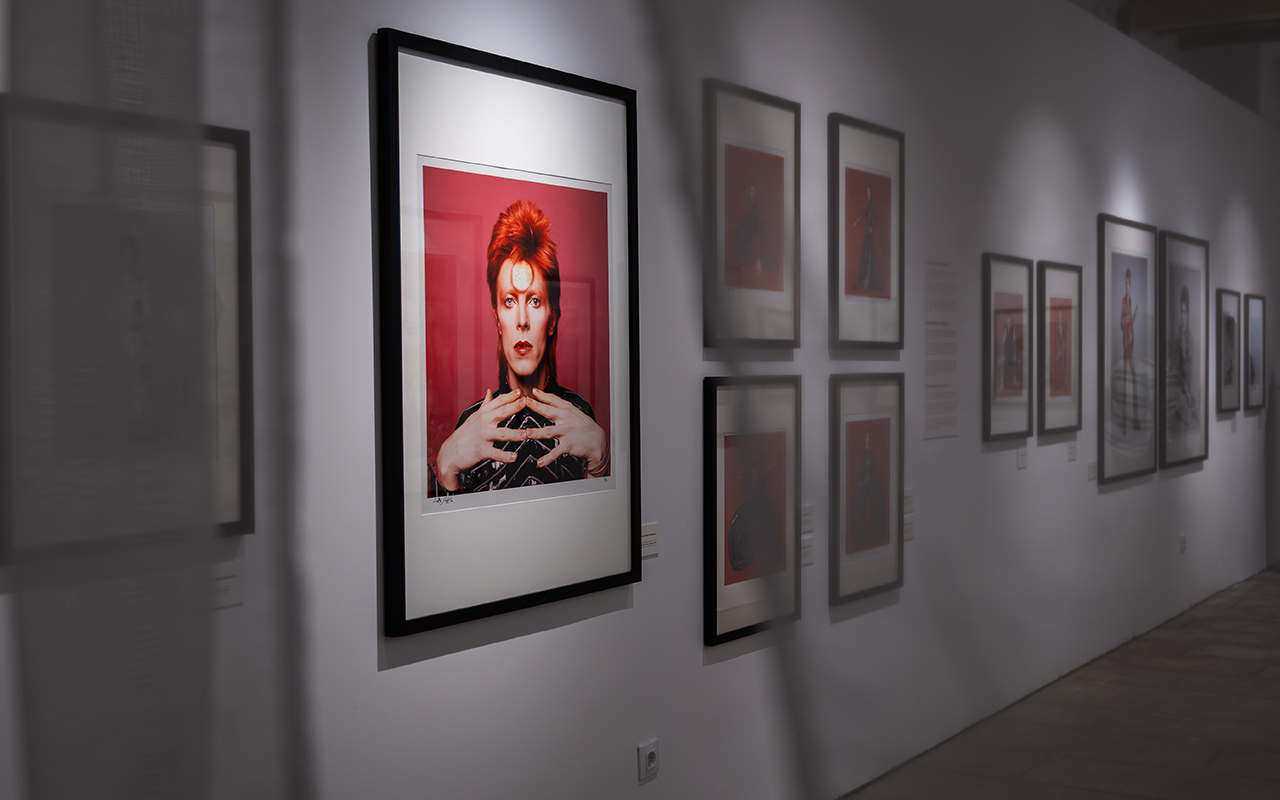
Bowie & Sukita Exhibition at Fotonostrum Gallery
There are artists who change their skin. David Bowie collected them all. Beyond his musical legacy, his image was a constantly evolving work of art. His wardrobe was his armor, his manifesto, his mirror. And photography, the medium that immortalized each transformation. The Bowie x Sukita exhibition, which can be visited at the FotoNostrum gallery in Barcelona until 15th September, invites you to immerse yourself in this chameleon-like universe through more than 70 iconic images captured by Japanese photographer Masayoshi. Sukita , one of the great witnesses of his metamorphosis.
Curated by the Italian group Ono Arte, this intimate and visual exhibition draws a direct line between Bowie’s aesthetic and his artistic restlessness. From his beginnings as Ziggy From Stardust in the 1970s to his later years, each selected image reveals a new incarnation of the artist. Sukita ‘s lens remains with him for more than four decades: she observes him, understands him, follows him. And in return, Bowie offers her more than just poses. He gives her a developing persona that metamorphoses at each stage and, without the need for words— Sukita didn’t speak English—builds a profound bond between artists.
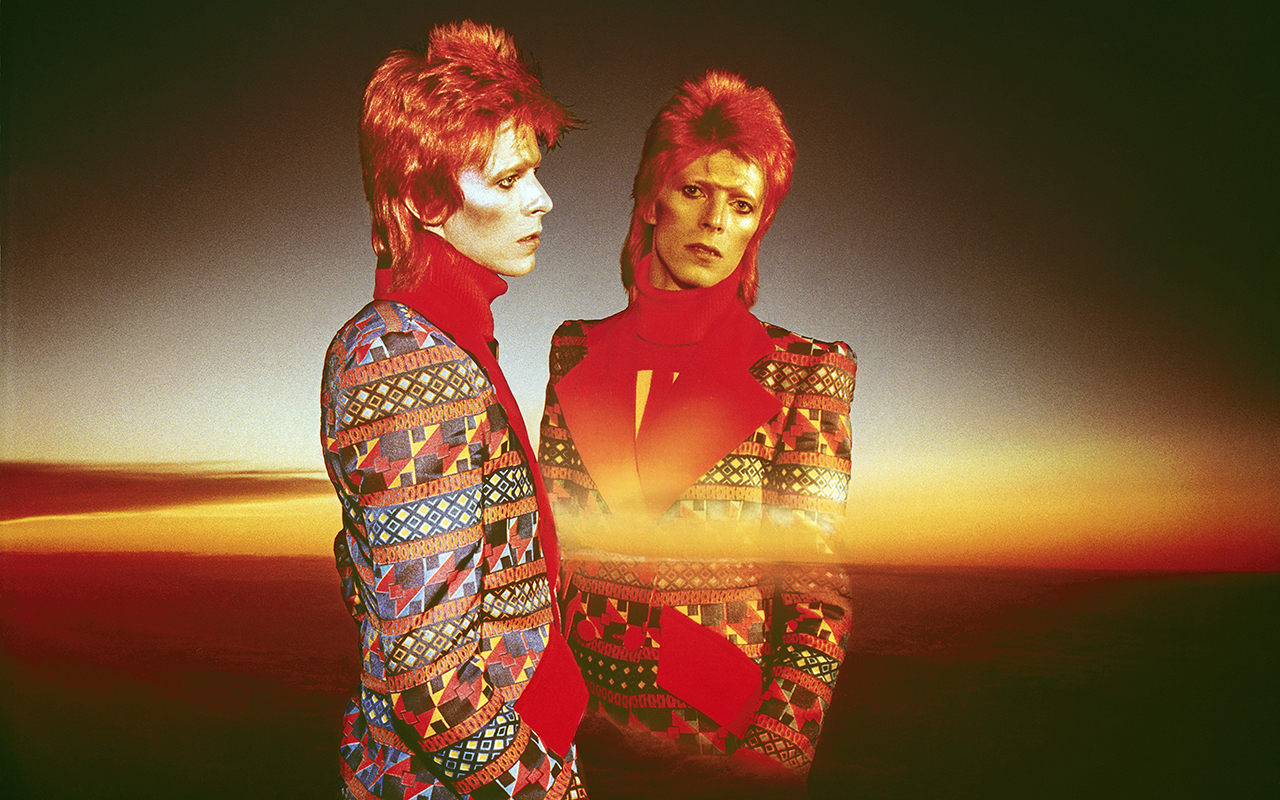
Down of Hope, 1973 © Photo by Sukita
A relationship sealed by the image
Their first contact arose sporadically in London in 1972, when Sukita traveled from Japan to photograph Marc Bolan of T-Rex and ended up meeting Bowie at one of his concerts. That first meeting marked the beginning of a sustained collaboration, which would give rise to one of the most recognizable images of the 20th century: the cover of the album Heroes (1977). But beyond this graphic icon, what emerges in this exhibition is the complicity between two creators who understand each other through intuition and silence.
In the images, we see Bowie as we knew him—radical, provocative, ethereal—and also as we’ve never seen him before: serene, introspective, almost domestic. The exhibition also includes lesser-known photographs taken in Japan, a country that inspired the artist with its refined aesthetic, symbolic theatricality, and visual culture. These scenes exude a different calm, a more deliberate Bowie, but just as magnetic.
Costume as a narrative
Bowie never dressed casually. Each outfit was a statement of intent. His wardrobe oscillated between futurism and nostalgia, androgyny and exaggeration, craftsmanship and artifice. In these photographs, fashion ceases to be decoration and becomes visual text: a metallic latex jumpsuit, a military-inspired suit, a geometric ensemble with oriental reminiscences… The fabrics that envelop him tell stories without words.
Extreme silhouettes, shiny textures, impossible collars, gravity-defying sleeves. The choice of materials—patent leather, lurex , velvet, lamé —constructed a silent choreography that dialogued with the music and the gesture. Bowie understood that a suit could sing on its own, and that a clothed body was also a clothed idea.
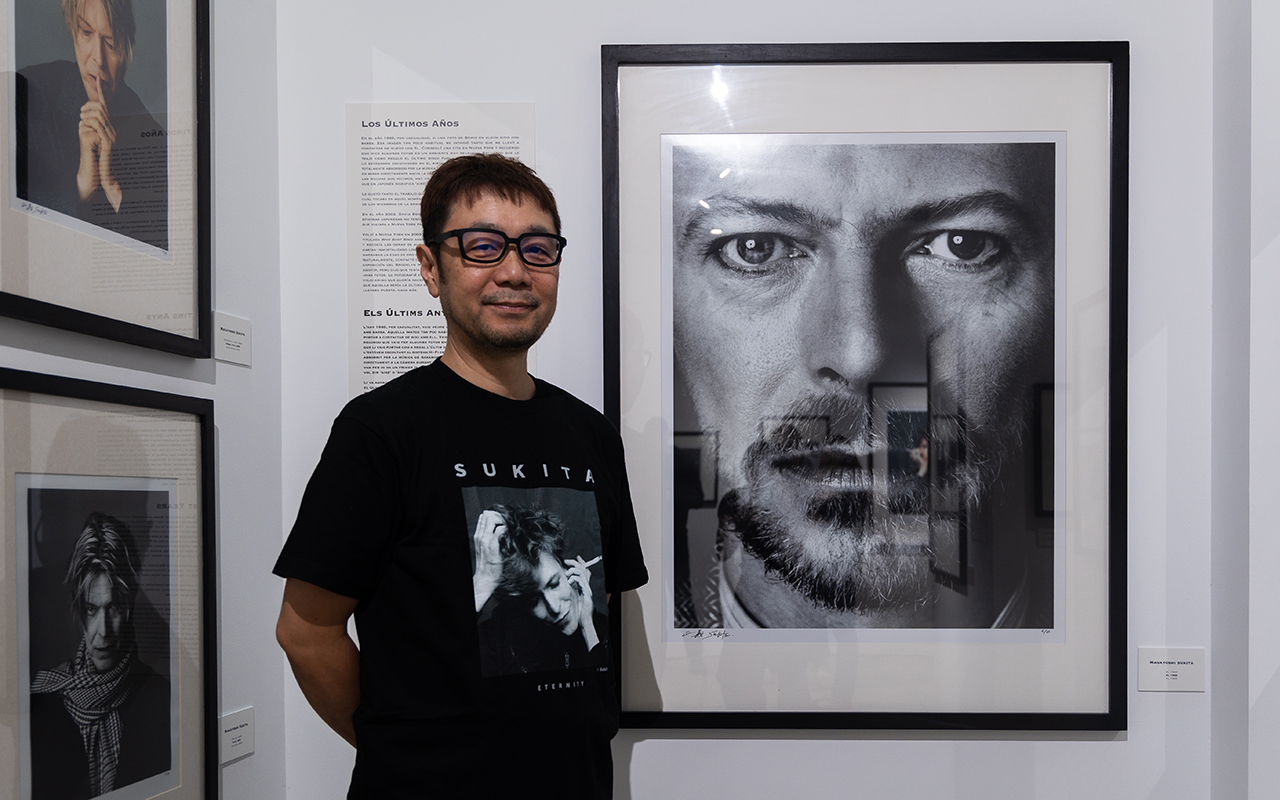
Aki Sukita, nephew of the renowned Japanese photographer, at the gallery. Pic by Fotonostrum
Sukita : the eye that intuited the myth
Masayoshi Sukita, born in Japan in 1938, came from the world of men’s fashion photography. His eye was trained to detect gestures, details, silences. Fascinated by urban subcultures and psychedelic rock, se attended Woodstock and photographed artists such as Iggy Pop, Joe Strummer , Devo , and YMO. But it was with Bowie that he found a true dialogue.
Sukita didn’t seek to capture the obvious, but the invisible. His mastery of composition, light, and scenic balance allowed him to create atmospheric, almost cinematic portraits. Many of the images that are now part of the collective imagination are born from this artistic bond and a trust forged over time.
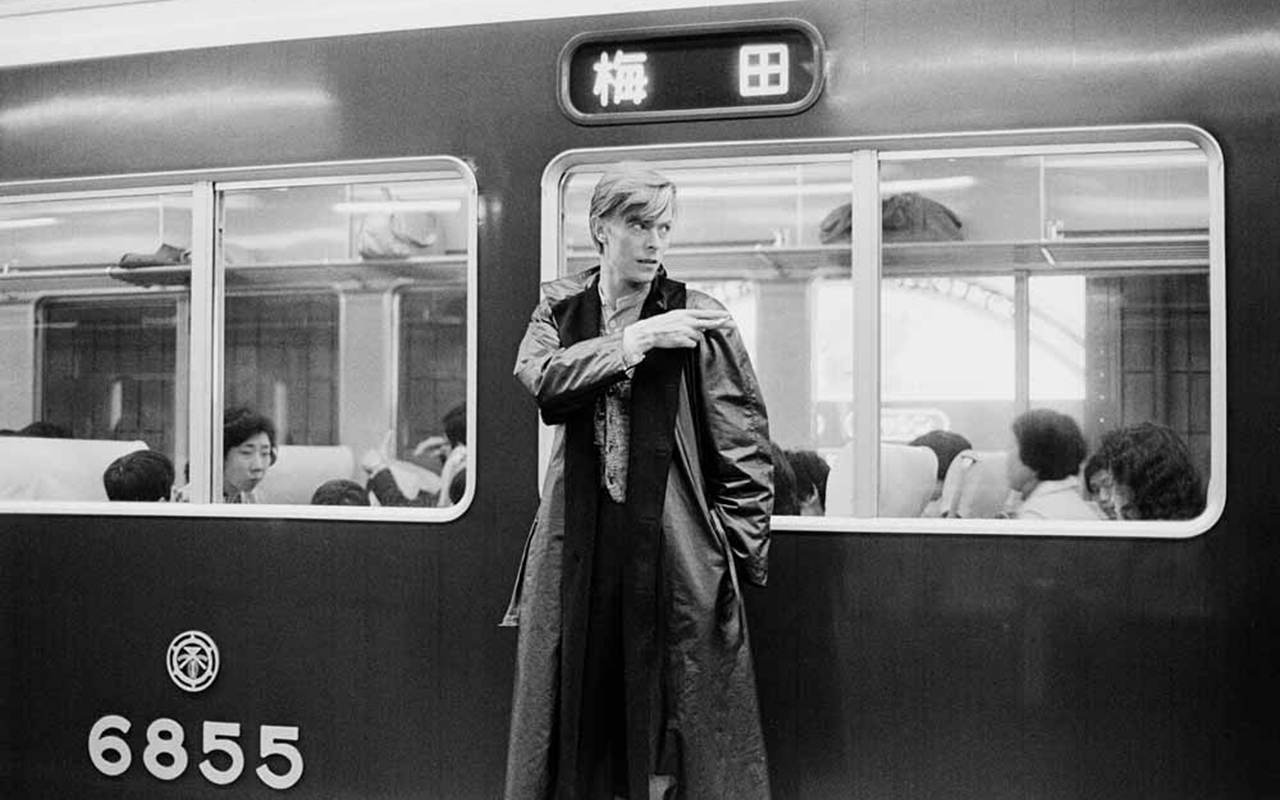
A Day in Kyoto 6 – Departure, 1980 © Photo by Sukita
A journey through style as freedom
Visiting Bowie x Sukita is like immersing yourself in an emotional archive where photography and fashion interact without hierarchy. There are intimate portraits, staged sessions, and concert photographs that capture the electricity of live performance. Each snapshot is an open door to the universe of an artist who made his body a canvas and his wardrobe a manifesto.
Today, designers, artists, and textile lovers continue to draw on his legacy. Because Bowie didn’t just dictate trends: he shattered them. He was haute couture without a runway, glam without gender, avant-garde without nostalgia. And that free, brave, and deeply visual spirit connects with the soul of GratacĂ³s, where each fabric is also a creative act.
Practical information
📍 Bowie x Sukita
From May 23 to September 15, 2025
FotoNostrum – Carrer Princesa 19, Barcelona
www.fotonostrum.com
